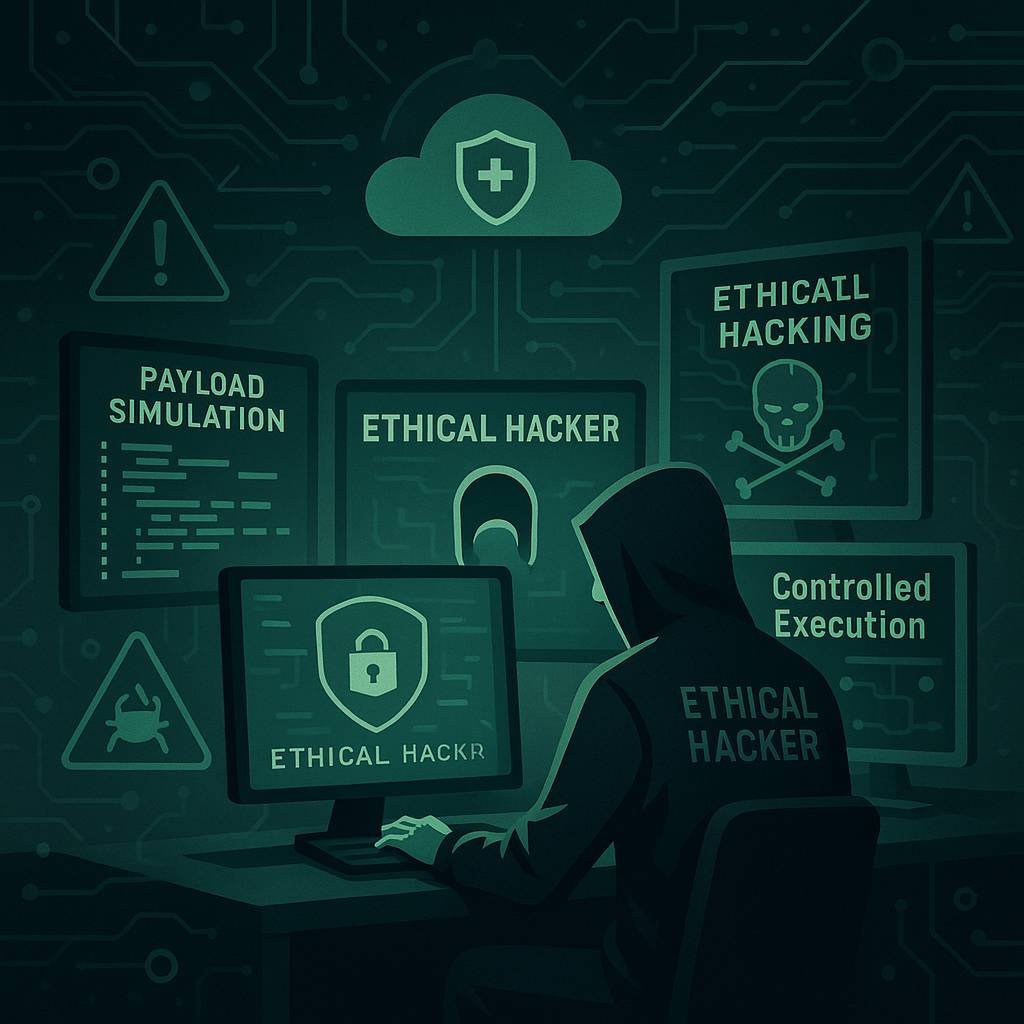The OSINT Handbook: Your Practical Guide to Finding Truth Online (Tools, Ethics, and Real Use Cases)
If you’ve ever wondered how investigators, journalists, and defenders uncover patterns hiding in public data, you’re in the right place. Open-source intelligence—OSINT for short—is the art and science of finding answers in places everyone can see, but few know how to read. Think of it like turning the entire internet into your research assistant, then asking better questions than everyone else.
Here’s the good news: you don’t need a badge or a supercomputer to do OSINT well. You need a clear process, an ethical compass, and a toolkit that matches your goals. In this guide, I’ll show you how to gather and analyze online information responsibly, make sense of noisy signals, and use OSINT to strengthen threat intelligence and cyber defense. Along the way, you’ll learn what the best tools can and can’t do, when to use them, and how to avoid common pitfalls that trip up even seasoned pros.
What is OSINT? A quick definition that actually helps
Open-source intelligence is the collection and analysis of information from publicly available sources for decision-making. “Publicly available” doesn’t just mean free; it includes anything legally accessible without special privileges—websites, social media, public records, leaked datasets, job posts, news, forums, search engines, and more.
Why it matters: – It’s faster than traditional intel because the data is already out there. – It’s often cheaper and safer to collect than closed-source data. – It scales—automations and APIs let small teams produce big insights.
Where OSINT shows up in the real world: – Security teams mapping attack surfaces and spotting exposed assets. – Fraud analysts linking identities across platforms to stop scams. – Journalists verifying media and investigating networks. – Humanitarian researchers geolocating imagery during crises.
Here’s why that matters: the same techniques that help reporters validate stories can help your security team anticipate threats and respond with confidence.
The legal and ethical foundations you can’t skip
OSINT is powerful. It comes with responsibility. You must operate within the law and respect privacy and platform terms. That’s not just a compliance checkbox; it’s risk management and reputation protection.
Core principles for responsible OSINT: – Legality first: Know your jurisdiction and the terms of the platforms you query. If you operate in the EU, get familiar with the GDPR basics and data processing rules. – Consent and necessity: Collect only what you need, and document why you’re collecting it. – Minimize harm: Don’t expose private individuals, victims, or sensitive locations; follow newsroom-style ethics for redaction and disclosure. – Respect platform policies: Automated scraping without permission can violate terms of service and laws; consider approved APIs where available. – OPSEC: Your research activity can reveal your identity or intent—use professional accounts and approved infrastructure to avoid mixing personal and work contexts.
If you want a solid grounding, the NIST Cybersecurity Framework helps you align OSINT with risk management, and the EFF’s Security Self-Defense resources offer practical privacy guidance for researchers. Want to go deeper? Check it on Amazon.
The OSINT toolbox: methods, not just tools
Great OSINT starts with methods. Tools amplify your technique.
Key categories and how they help: – Web search mastery: Advanced operators turn search engines into microscopes. Use site: to limit domains, filetype: to find documents, and minus terms to cut noise. – Social media intelligence (SOCMINT): Public profiles, posts, likes, and follower graphs reveal context, timing, and relationships. Focus on timelines and cross-platform consistency. – Domain, IP, and infrastructure intel: WHOIS data, DNS records, and SSL transparency logs help identify owners and link assets across services. – Metadata and document analysis: Images and PDFs often include hidden EXIF or author fields—gold for timelines and attribution. – Geospatial OSINT (GEOINT): Satellite imagery, maps, and street-level photos can geolocate a scene when paired with landmarks and shadows. – Dark web monitoring: Some teams track criminal chatter via vetted services; handle with strict policies and legal oversight.
Curated directories like OSINT Framework map these methods to specific sources and utilities—great for brainstorming and workflow design.
Popular OSINT tools explained (without the hype)
- Maltego: A graph-based platform for connecting entities (names, domains, emails, IPs) via “transforms.” It’s excellent for link analysis and building relationship maps. Learn more at Maltego.
- Shodan: A search engine for internet-connected devices and services. It helps you discover exposed services, default banners, and misconfigurations—vital for attack surface mapping. Explore it at Shodan.
- Recon-ng: A modular reconnaissance framework that automates many collection tasks with a consistent workflow and reporting.
- Aircrack-ng: A suite for wireless network auditing and analysis—use only with authorization as part of a sanctioned security assessment. The project site is Aircrack-ng.
Each tool shines in a different phase of the OSINT lifecycle—collection, enrichment, or analysis. Ready to upgrade your skills with a field-tested guide you can keep on your desk? Buy on Amazon.
Discovery techniques that reveal hidden information
“Hidden” doesn’t mean secret. It often means overlooked.
Useful techniques: – Cached and archived pages: Compare live pages against Internet Archive snapshots to see edits, deleted sections, or prior versions. – Paste sites and code repositories: Job postings and code comments can leak tech stacks, internal URLs, or credentials (handle any sensitive findings responsibly). – Document hunting: Public PDFs, PPTs, and spreadsheets often carry internal keywords or authors—use them to identify teams, systems, or project names. – Cross-references: A suspicious domain registered by “Acme Registrar LLC”? Check if the same registrant email ties to other domains—patterns emerge fast.
Pro tip: Ask focused questions before you search. “Is this the same person?” is better than “Find everything about Alice,” and it keeps your investigation narrow and defensible.
Staying anonymous and safe: OPSEC for researchers
Good OPSEC protects you, your sources, and your conclusions. It also prevents alerting adversaries.
Practical habits: – Separate identities: Use dedicated research accounts and machines for OSINT; don’t mix personal and work profiles. – Browser hygiene: Block third-party cookies, isolate social media in containers, and clear storage between sessions. – Network choices: Follow your organization’s policy on VPNs, proxies, or secure research gateways; ensure legal and policy compliance in every region you access. – Logging and documentation: Keep an audit trail of queries, timestamps, and screenshots for repeatability and review.
If you’re working in higher-risk contexts (e.g., investigating organized threats), partner with legal and follow vetted playbooks like CISA’s Shields Up guidance for staying vigilant.
Build an OSINT workflow that actually scales
Tools are easy to buy; workflows are harder to design. A repeatable process saves time and reduces errors.
A simple, battle-tested lifecycle: 1) Plan: Define the question, scope, constraints, and legal boundaries. 2) Collect: Capture sources systematically (web, social, DNS, images, docs). 3) Process: Normalize formats, extract entities, and de-duplicate. 4) Analyze: Map relationships, timelines, and patterns; test rival hypotheses. 5) Report: Deliver concise findings with evidence and caveats; include visuals. 6) Automate: For repeatable tasks, add scripts, transforms, or API pulls—but respect rate limits and TOS.
What to automate: – Entity extraction from documents and pages. – Daily diffs of key web pages (career listings, partner sites, SSL logs). – Alerting on new domains that match brand keywords or typosquats.
What not to automate: – Sensitive outreach or any action that could be misinterpreted as probing. – Bulk scraping that breaches terms or privacy.
Choosing the right OSINT tools: smart buying tips and specs that matter
Before you pick a platform, define your “jobs to be done.” A journalist’s stack looks different from a SOC analyst’s. Here’s how to evaluate options:
- Data coverage: Which sources matter to you (social, DNS, breach data, darknet, images)? Depth beats breadth for most teams.
- Enrichment and transforms: Can the tool pivot quickly between domains, emails, IPs, hashes, and social handles?
- Export and reporting: Do you get clean CSV/JSON exports, graphs, or dashboards your stakeholders actually read?
- Audit and compliance: Logs, case management, and access controls are critical in regulated environments.
- Collaboration: Shared projects, notes, and evidence management prevent duplicate work.
- Pricing and limits: Check quotas, API access, and enterprise features you’ll need six months from now.
Tip: Pilot with a real use case and time-boxed objective, then judge by outcomes, not feature lists. If you prefer a structured, field-tested playbook that doubles as a buyer’s guide, See price on Amazon.
From OSINT to threat intelligence: turning signals into decisions
OSINT shines when you connect it to threat models and controls. The goal isn’t collecting everything—it’s seeing what matters early enough to act.
Practical ways to integrate OSINT into threat intelligence: – Map findings to MITRE ATT&CK techniques to understand likely tactics and impacts. – Track indicators of compromise (IOCs): domains, IPs, hashes, and toolmarks linked to real campaigns, not random noise. – Monitor brand and infrastructure exposure: typosquats, open ports via Shodan, leaked credentials in dumps (handled legally and ethically). – Enrich alerts: When your SIEM or EDR fires, add OSINT context to speed triage and reduce false positives. – Feed back into defenses: Use OSINT to inform blocklists, detections, security awareness, and vendor risk assessments.
OSINT won’t replace telemetry from inside your environment, but it can widen your field of view and reveal weak signals that internal logs miss. Support our work and get the full reference in one place—Shop on Amazon.
Real-world scenarios: OSINT in action
Scenario 1: Attack surface mapping – A security team inventories public assets: domains, subdomains, cloud buckets, and SSL certificates. – They use passive DNS, certificate transparency logs, and Shodan banners to spot forgotten services. – Outcome: Unused staging servers get decommissioned, exposed admin panels get locked down, and a new process keeps the inventory fresh.
Scenario 2: Typosquat detection and response – An analyst monitors for lookalike domains targeting an ecommerce brand. – They identify a phishing cluster by correlating WHOIS data, hosting providers, and certificate reuse. – Outcome: Legal sends takedowns, detections get tuned, and a customer alert campaign reduces fallout.
Scenario 3: Third-party risk check – Before onboarding a new vendor, the team reviews public docs, job posts, and social updates. – They notice outdated tech and staff turnover signals that suggest weak security maturity. – Outcome: Procurement adds security requirements and a phased rollout to reduce risk.
Scenario 4: Media verification for incident response – During an emerging event, the team checks timestamps, shadows, and landmarks in user photos to verify location and time. – Cross-referencing with satellite imagery and weather data reduces rumor-driven decisions. – Outcome: Communications stay accurate and credible under pressure.
Common mistakes (and how to avoid them)
- Boiling the ocean: Trying to collect “everything” drowns analysis. Start with a question, then collect minimally to answer it.
- Confirmation bias: We all see what we want to see. Force yourself to consider rival hypotheses and seek disconfirming evidence.
- Weak documentation: If you can’t reproduce your steps, you can’t defend your findings. Keep timestamps, URLs, and screenshots.
- OPSEC slips: Using personal accounts or mixing profiles leaves traces; use dedicated environments and approved gateways.
- Legal blind spots: Automation and scraping can cross lines—review TOS and consult legal, especially across jurisdictions.
A simple fix is to standardize your workflow and review it quarterly like a playbook—small improvements compound fast. Ready to systematize your practice with a guided framework and case studies? View on Amazon.
A 30/60/90-day roadmap to real OSINT capability
Day 1–30: Foundations and hygiene – Define your core use cases: attack surface, brand protection, fraud, vendor due diligence. – Build a clean research environment: dedicated browser profiles, logging templates, and evidence storage. – Master advanced search and social verification basics; practice on low-stakes scenarios. – Draft your legal and ethical guardrails; specify no-go zones.
Day 31–60: Tools and workflows – Pilot 2–3 tools aligned with your use cases (e.g., Maltego for graphs, Shodan for exposure checks). – Automate one task: a daily diff on a key page or a brand keyword alert. – Create a one-page reporting template with visuals and clear actions.
Day 61–90: Integration and scale – Map OSINT findings to MITRE ATT&CK and your detection rules. – Establish review cadences with stakeholders (IR, legal, comms). – Measure outcomes: time saved, incidents prevented, or risks reduced. – Document lessons learned and rotate a new analyst through the playbook.
Final takeaways
OSINT is not about having the most tools—it’s about asking sharp questions, gathering responsibly, and connecting dots faster than adversaries. Start with ethics and process, then add the right platforms where they actually speed decisions. If you focus on repeatability and impact, your OSINT program will become a durable edge for your team and organization.
Want more like this? Subscribe and keep exploring—there’s always another signal waiting in plain sight.
FAQ: Open-source intelligence (People Also Ask)
Q: Is OSINT legal? A: Yes—when done within the law and platform terms. OSINT uses publicly accessible data, but scraping restrictions, privacy regulations like the GDPR, and data misuse laws still apply. When in doubt, consult legal and keep an audit trail.
Q: What are the best OSINT tools for beginners? A: Start with your browser, advanced search operators, and curated directories like OSINT Framework. For infrastructure exposure, try Shodan; for link analysis, explore Maltego. Add tools only when they solve a defined problem.
Q: How does OSINT support threat intelligence? A: OSINT expands visibility outside your perimeter. It helps identify exposed assets, track typosquats, contextualize alerts, and map adversary techniques to MITRE ATT&CK. The result is faster triage and better prevention.
Q: What skills do I need to learn OSINT? A: Critical thinking, search mastery, structured note-taking, and a basic understanding of networks and web tech. Over time, add data normalization, visualization, and light scripting for automation. Ethics and OPSEC are non-negotiable.
Q: Can OSINT replace traditional cybersecurity tools? A: No. OSINT complements internal telemetry from EDR, SIEM, and network sensors. It’s best used to enrich alerts, anticipate risks, and guide decisions—not to replace endpoint or network visibility.
Q: How do I avoid bias in OSINT analysis? A: Define testable hypotheses, seek disconfirming evidence, use peer review, and document sources. Small process habits—like saving rival hypotheses—keep you honest and your findings defensible.
Q: What’s the difference between OSINT and doxxing? A: Intent, method, and outcome. OSINT is the ethical, legal collection and analysis of public data for legitimate purposes. Doxxing is malicious exposure of personal data to harm someone—unethical and often illegal.
Q: Is Aircrack-ng legal to use? A: Only with authorization. Tools like Aircrack-ng support sanctioned wireless security assessments. Using them on networks without permission can be illegal and unethical.
Q: How do I build an OSINT program for my organization? A: Start small with a clear use case (e.g., attack surface). Establish policies, pick tools to fit the job, document workflows, and measure outcomes. Align with frameworks like the NIST Cybersecurity Framework and coordinate with IR, legal, and communications.
Q: Where can I learn verification techniques for images and videos? A: Investigative guides from organizations like Bellingcat cover geolocation, chronolocation, and media verification with practical examples and methodology.
Discover more at InnoVirtuoso.com
I would love some feedback on my writing so if you have any, please don’t hesitate to leave a comment around here or in any platforms that is convenient for you.
For more on tech and other topics, explore InnoVirtuoso.com anytime. Subscribe to my newsletter and join our growing community—we’ll create something magical together. I promise, it’ll never be boring!
Stay updated with the latest news—subscribe to our newsletter today!
Thank you all—wishing you an amazing day ahead!
Read more related Articles at InnoVirtuoso
- How to Completely Turn Off Google AI on Your Android Phone
- The Best AI Jokes of the Month: February Edition
- Introducing SpoofDPI: Bypassing Deep Packet Inspection
- Getting Started with shadps4: Your Guide to the PlayStation 4 Emulator
- Sophos Pricing in 2025: A Guide to Intercept X Endpoint Protection
- The Essential Requirements for Augmented Reality: A Comprehensive Guide
- Harvard: A Legacy of Achievements and a Path Towards the Future
- Unlocking the Secrets of Prompt Engineering: 5 Must-Read Books That Will Revolutionize You







